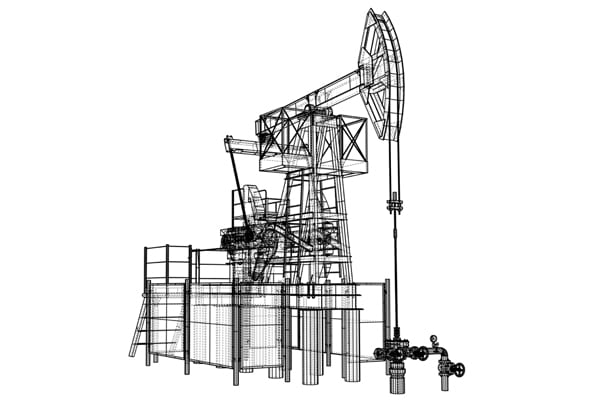Let's Talk !

By: John Bailey
Request A ConsultThe Industrial Internet of Things is a network of manufacturing machines and advanced analytics that are used enhance industrial processes. IIoT integrates machine learning, big data, and machine-to-machine communication to execute manufacturing efforts more efficiently. Micro sensors on preexisting machinery, provides unlimited access to a pool of data describing system health in real-time, allowing operators to become intuitive to the network's ebb and flow and making it possible to pinpoint skewed numbers.
If you wish to jump ahead, click on one of the headings below:
Almost two decades into the digital era, the internet has become a climate for digital revolution on all fronts. We are seeing digital communication occur not just between humans, but between things, introducing new methods of data cultivation and opening the floodgates to petabytes of untapped information. The Internet of Things, or IoT, refers to the network formed between embedded software systems, integrated devices, and real-time information with data-collecting sensors.

The Internet of Things has ushered in an era of total interconnectivity with a broad array of applications, ranging from controlling the temperature of your home from a mobile device to monitoring highways for traffic incidents and then using that data to project cautionary messages onto road signs. Rather than targeting life hacks like IoT, the Industrial Internet of Things (IIoT) conjures the power of big data to channel improvements in system health and operational efficiency.
We are all familiar with the expression, time is money, but for entities in the oil and gas industry, non-productive time can have a severely detrimental impact on revenue. In order to consider the benefits of IIoT for the petroleum industry, it is first important to understand the industry's pain points-non-productive time, injury and loss, and manpower. IIoT reconfigures these expenses in a way where things we once defined as fixed costs become variable costs by introducing us to technologies we previously didn't have access to. In leveraging IIoT, oil and gas participants are not reorganizing old data, they are creating new data.
In 2014, cost per barrel hit unprecedented highs, settling around $100/barrel. As fracking and other excavation technologies came to market, that $100 dropped down to $50 and this left providers scrapping to increase volume to compensate for the significant decline in value. On top of that decline in the value of its services, the oil and gas industry is run by an aging workforce, most of whom will retire within the next decade. This duality has made automation an imperative for the oil and gas industry.
Efficiency is indicative of a healthy infrastructure, and by optimizing how the parts of a system interact, oil and gas companies will limit waste that has previously subtracted from profits. This optimization comes from machine-to-machine communication (M2M), where, if we are talking about an oil rig operation, the drill pipe sends information to the blowout preventer, and the blowout preventer relays the message to the fuel tanks and so on.
This process occurs automatically, creating a perpetual, telemetric dialogue for a proctor to access from a dashboard. M2M communication requires embedded microcontrollers, sensors, and processors that connect through an internet gateway. The smart devices then connect to the cloud, transmitting the data and processing in real-time.

The Oil & Gas Journal cites preventative maintenance as the number one imperative to running a successful operation in their industry. The key to surviving the fluctuating price per barrel is consistency, running "a continuous, uninterrupted operation." At $50 per barrel, there is no room for downtime, and any mechanical malfunctions translate into an irrecoverable loss.
Because machines are incapable of communicating when they are ill, the oil and gas industry has relied on scheduled maintenance to detect errors when they are still in the early stages of degradation. No matter how routinely oil and gas participants perform system checkups, all manual procedures are subject to human error and unforeseeable failures.
In an attempt to cut costs, Oil and Gas businesses are replacing refinery specialists with novice contractors, who can't yet recognize the warning signs of damaged equipment. And on the flip side, veteran personnel may become jaded to maintenance procedures and subject the system to negligence unknowingly.
By installing micro sensors on preexisting machinery, Oil and Gas companies can gain unlimited access to a pool of data describing system health in real-time, allowing operators to become intuitive to the network's ebb and flow and making it possible to pinpoint skewed numbers. Real-time performance analytics distance business owners from the expense of damage control while catalyzing production.
Not only will business owners experience a decline in system failures, but also a decrease in on-site accidents. There is an inherent risk associated with the oil and gas industry; the operation is dangerous and easily corruptible. In the past, we have seen oil rig explosions, exposure to toxins, workers falling from extreme heights—it is not an easy environment to work in. Because many of these accidents occur due to system error, IIoT preventative analytics have the potential to greatly reduce these accidents, minimizing lawsuits based on gross negligence.
This is how IIoT tackles human capital management. As the aging workforce enters retirement, they will be replaced by IIoT remote monitoring centers, off-site facilities where operators process incoming data from the microprocessors. This is also a means of reducing accidents; if fewer workers are subjected to the risks of such a caustic work environment, inevitably there will be less accidents and injuries.
The average oil rig worker makes 100k/year, a salary scaled to the risks and niche skillset required to do the job. Perhaps, as the aging workforce dissipates organically and we discover new applications for the big data propagated through IIoT networks, Oil and Gas companies will be able to downsize their workforce while still maintaining the same rate of production. M2M collaboration across an IIoT is not a human replacement, but a supplement rather. We are not replacing humans with machines; we are simply enhancing understanding with absolute human to machine collaboration and helping experts do their jobs more efficiently.
By sending analytics from offshore rigs, directly to a mobile device, workers can respond to data remotely, managing system adjustments without physically being there. This access comes from a custom dashboard that corresponds with all microprocessors.
Oil and Gas cultivation comes with natural limitations, an organic but finite asset, and for this reason asset management is imperative for the oil and gas industry. Although the public awareness of fossil fuel scarcity is at its peak, the rate of excavation is as well. Every year, we see emerging technologies that allow oil rig operations to drill faster and with greater accuracy—multi-well pads, mobile rigs, electrically powered rigs.

The IIoT creates interconnectivity between these technologies, providing a platform for them to converse. In supporting M2M communication, oil and gas enterprises will be able to access minute by minute data illustrating productivity and mapping out the life cycle of each well, while simultaneously determining the coordinates of oil-rich reservoirs to drill into next. Not only, does the IIoT provide inventory management, but also helps operators decide when it's time to move on.
Machine to machine communication is the IIoT's selling point, but I find it also improves human to human communication as well. Human communication is one of the greatest barriers to enterprise in general because it often goes overlooked, especially for companies with a large, international workforce. The IIoT has the potential to bridge gaps in communication between workers by funneling data into a user-friendly dashboard that can be accessed from anywhere. Granting all workers access to the same data pool will eliminate departmental divide and foster a unified vision to carry into practice, helping the whole system run more cohesively, humans and machines alike.
Of course, we are still uncovering ways to apply IIoT big data, and to be frank, there are some technologies the oil and gas industry does not know how to apply yet. Nevertheless, it is better to be at a surplus than a deficit, and for the first time in a while, the oil and gas industry has access to more numbers than they know how to process.
Chetu programs gateway solutions for the microprocessors, sensors, and processors that make M2M dialogue possible. These devices connect to the cloud so they can be accessed in real-time. Chetu begins with the processors and continues through to the connectivity services.
A Universal Plug and Play protocol provides an interface for communication between smart devices, because although the microprocessor gives them the capacity to connect with one another, the IIoT requires internet connectivity. Chetu leverages REST and SOAP protocols to enable JSON and XML inter-software communication.
After completing the necessary back-end development, creating a network for the microprocessors to transmit data through, Chetu focuses on engineering a dashboard where operators can visualize the data and then use it functionally.
Disclaimer:
Chetu does not affect the opinion of this article. Any mention of a specific software, company or individual does not constitute an endorsement from either party unless otherwise specified. This blog should not be construed as legal advice.
Founded in 2000, Chetu is a global provider of software development services, solutions and support services. Chetu's specialized technology and industry experts serve startups, SMBs, and Fortune 500 companies with an unparalleled software delivery model suited to the needs of the client. Chetu's one-stop-shop model spans the entire software technology spectrum. Headquartered in Plantation, Florida, Chetu has fourteen locations throughout the U.S. and abroad.
Privacy Policy | Legal Policy | Careers | Sitemap | Referral | Contact Us
Copyright © 2000-2024 Chetu Inc. All Rights Reserved.
